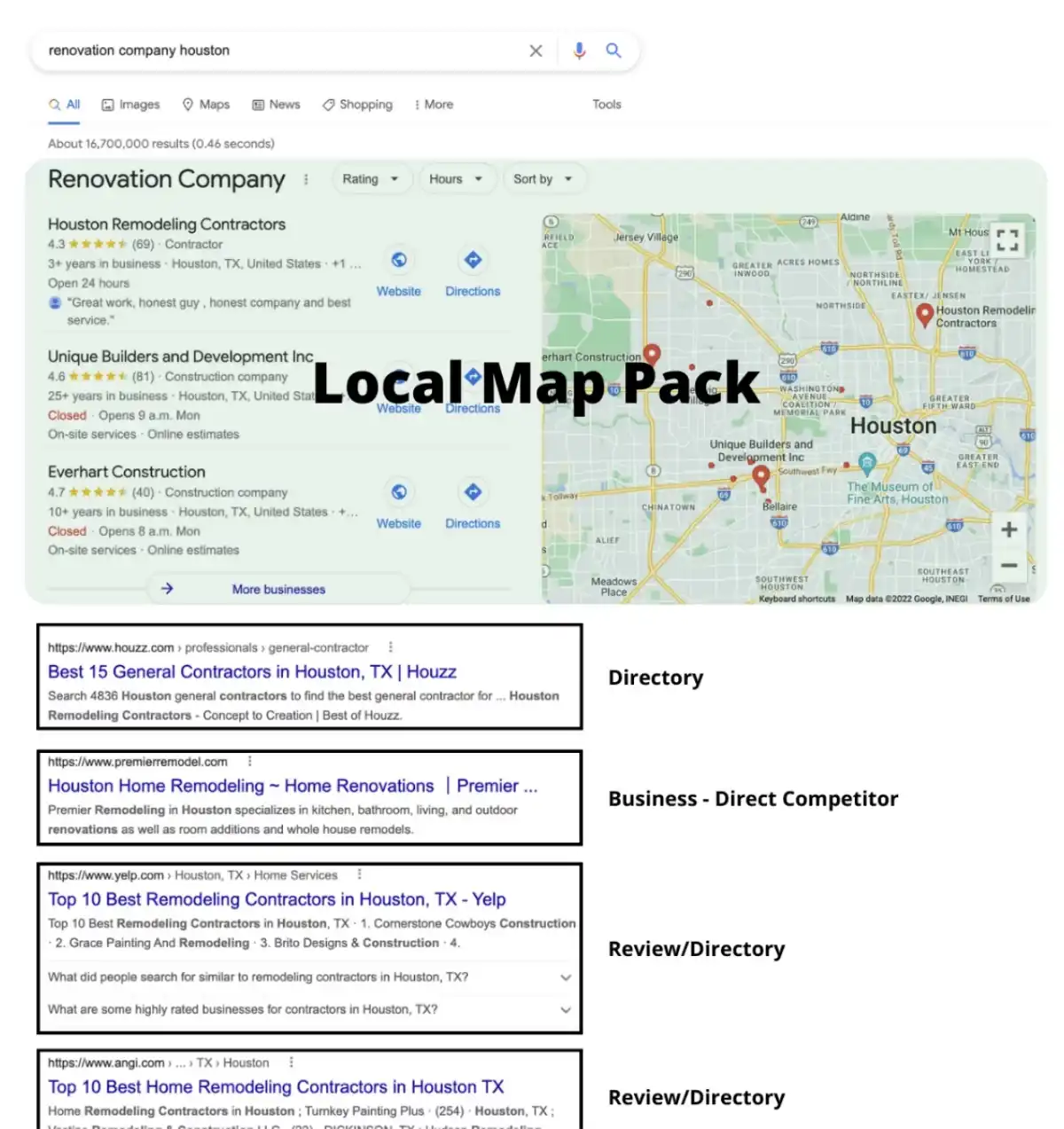
When it comes to improving your visibility in local search results, keyword research stands as one of the most essential steps. Focusing on local SEO means targeting people who are searching for services or products within a specific area, so finding the right keywords can make or break your strategy. Local keyword research isn’t just about ranking higher—it’s about connecting with local customers who are ready to engage. In this guide, we’ll break down practical techniques to help you uncover high-impact keywords for your business, attract the right audience, and improve your local presence.

Know your client
Before diving into finding keywords, you must know exactly where your clients are located or their service areas.
You would want to know the country, state, city, district, and even town names of their commercial address.
This can be really helpful when you start expanding your keyword research to find opportunities around your client’s location.
For example, say your client is a renovation company based in a city but also services other nearby cities, you would want to expand your keyword list. If you “robotically” target only the city where the client is based, you are losing opportunities to be found in other nearby communities that also have demand for renovation services.
Develop a Target Location Map
For instance, your client is based in the city of Toronto but services the entire GTA (municipal region including Toronto).
Why do I need this?
Well, it can be extremely helpful for you in the later stages of your keyword research campaign.
- To do this, you would need to use Google Maps and search for the main city that you want to target.
- Then, zoom in or out to surrounding cities and communities on the map (See example below).
- Collect and put all the names into a keyword list, which will be used in the next step.
Keyword Data
You will want to check if there are any searches for your client’s product/service within the locations you developed in the Location Map above.
In this case, assuming your client is a construction company, you would want to know where there are searches for “construction companies”, “builders”, “building companies”, “renovation companies”, “flooring services” etc.
So, you can attach the city/town names from the location map developed in an earlier stage to the tail of these keywords. It will look like this: “renovation company mississauga” , “remodeling contractor york”, vaughan remodeling company”, etc.
You can also use various SEO tools like Ahrefs, SEM Rush, and Google Keyword Planner to find related keywords that are searched by internet users to enrich your comprehensive keyword list.
Quick Fact: “construction companies in ontario” is likely to be more competitive than “construction company in north york” because it covers a much larger geographical area.
SERP Analysis
After getting all the data you need for the keyword list, such as Search Volume, Keyword Difficulty and SERP Features, you will need to check and analyze the SERPs of those keywords to categorize them by intents.
3 major Search Intents of local queries

Commercial
Informational
Informational queries are searched by those looking for information before making a purchase decision. These people are higher in the sales funnel.
For example, before you hire a construction company to help you renovate your home, you may want to explore the kind of material that is best for your floor, or compare different countertops, etc.
You can see that most organic results are information-rich or article based.
The reason is that Google values pure informational pages that best provide useful information related to the search query. So often time, the top ranking pages are not posts from renovation companies with commercial content (converting readers into their customers). In fact, these top-performing pages are from authoritative publications in the industry.
However, if your website is high authority, you can still consider creating helpful blog articles to compete for these keywords with the goal of answering the questions from users.
Navigational
This group of keywords is searched to find a specific brand/s.
For example, “giant creative marketing agency”.
This group of keywords should be excluded from your content strategy for SEO. Because the results returned will be all about one specific brand. The word “Navigational” means users utilize Google to navigate to a location they already have in mind.
Tip: This is one of the biggest differences between SEO and PPC, where you may want to target an audience searching for your competitors’ brand names.

Pick the right keywords
After categorizing all the keywords, you now want to decide what keywords can be grouped together and what pages need to be created.
Can “renovation service”, “renovation company,” and “remodeling company can be targeted with 1 page, or do you need to create multiple dedicated pages to rank well?
The answer is to NEVER make assumptions without data to back up!
You would want to search for those keywords one by one to find out if the top-ranking results are the same or not.
One of the easy ways to find what keywords a page can rank for is to search for the prominent keyword (highest search volume).
Then check the top-ranking result. You can do this by analyzing that page with SEO tools to see what are all the keywords that page is ranking for (#1 -> #10).
So, you now have an overview of what keywords can be grouped together.
However, this doesn’t always provide you with the most comprehensive list. Because, in many cases, you may have a better SEO strategy that covers a wider range of keywords that your competitors are not covering.
In larger projects where there are thousands of keywords, you may want to use automation techniques with SERP API to make this process less tiring (we will not dig into this in this blog as its an advanced technique).

Steal your competitor’s Keywords
This is actually the same as traditional keyword research, where you look at your competitors’ keywords that are bringing in the most traffic to them. And you can get inspired by that list.
This shouldn’t be the only tactic you use for local keyword research because, in many cases, your competitors are just not doing a great job with their website from an SEO perspective.
So, if you only mirror their keyword profile, how are you going to be performing better than them?



